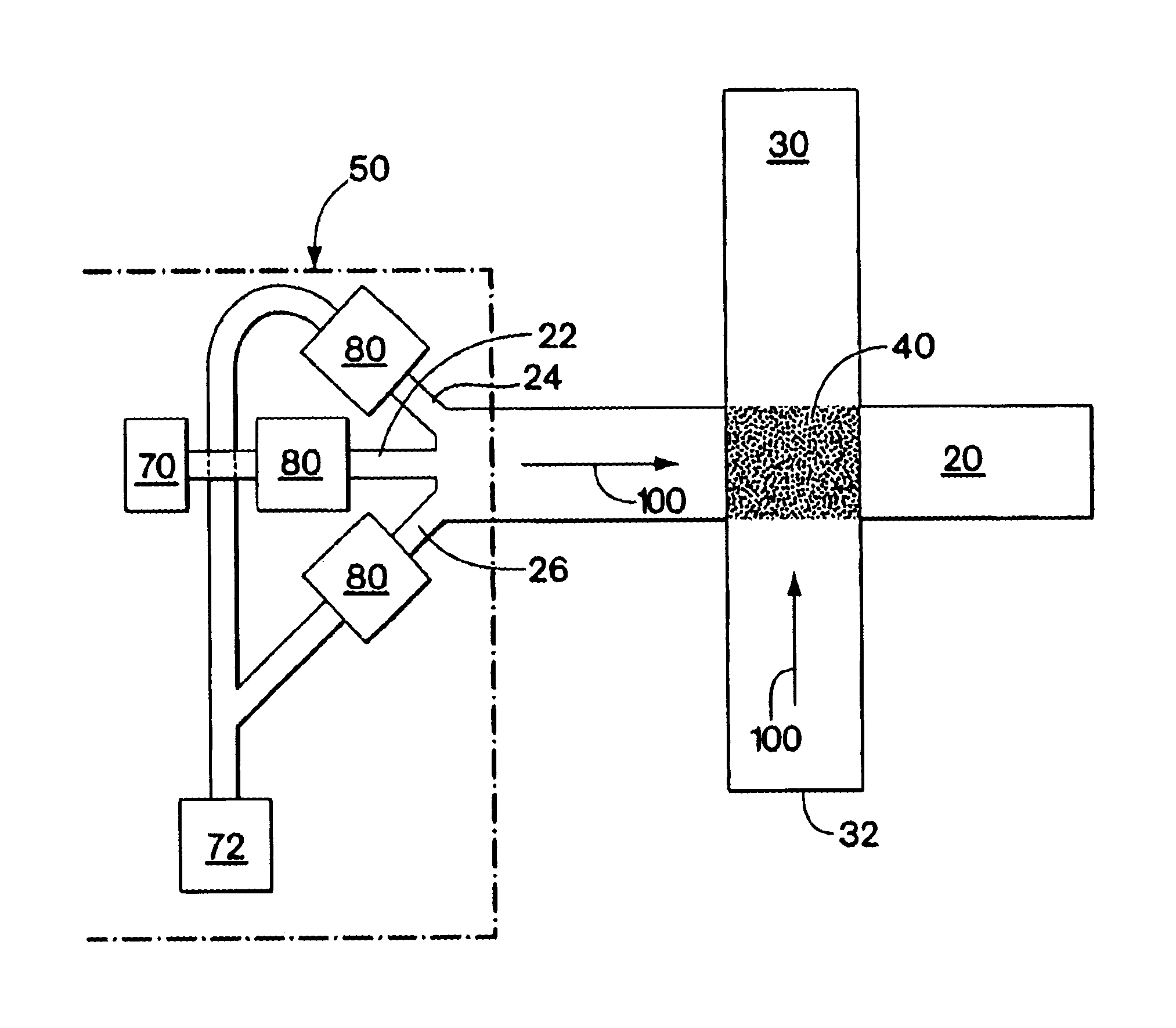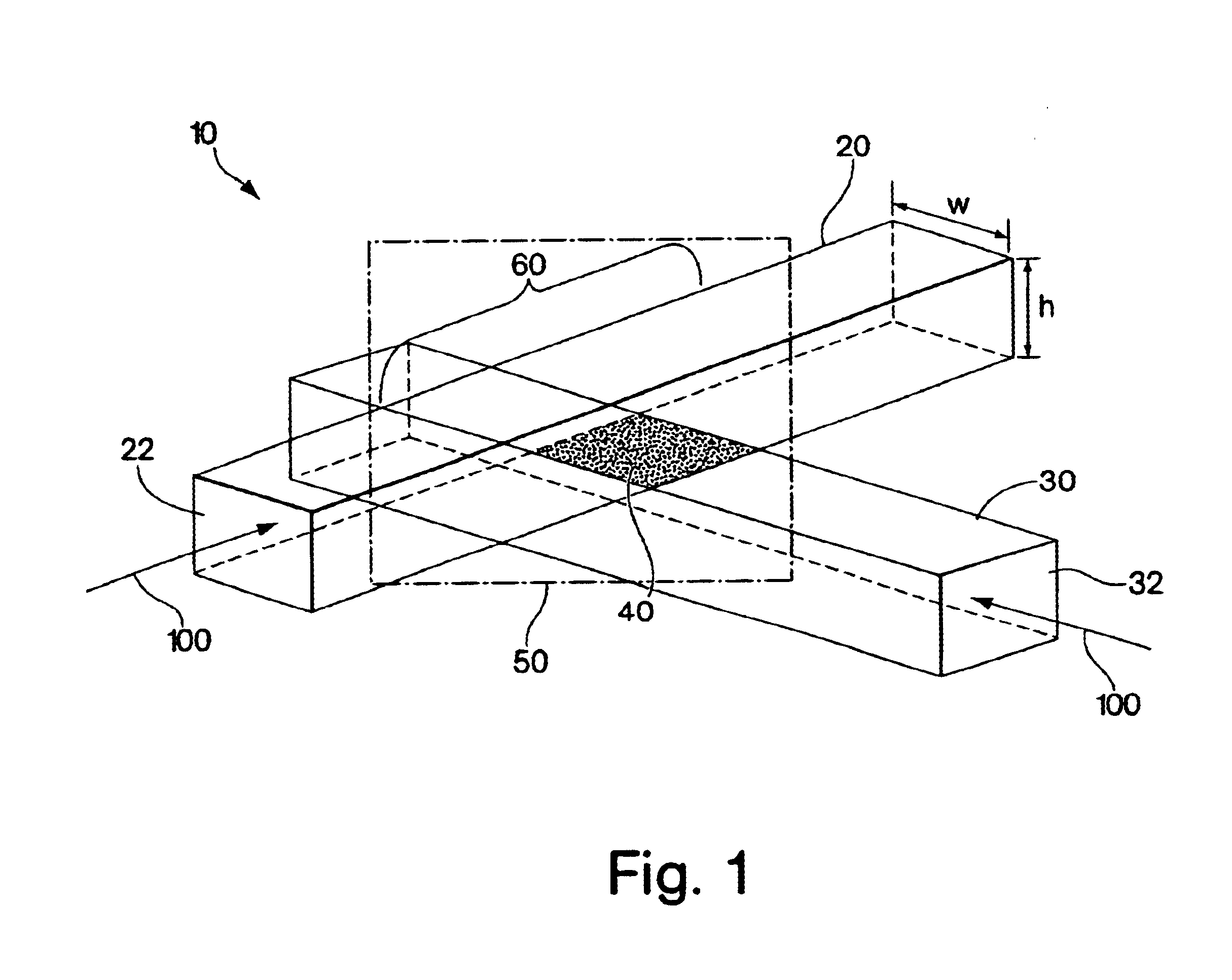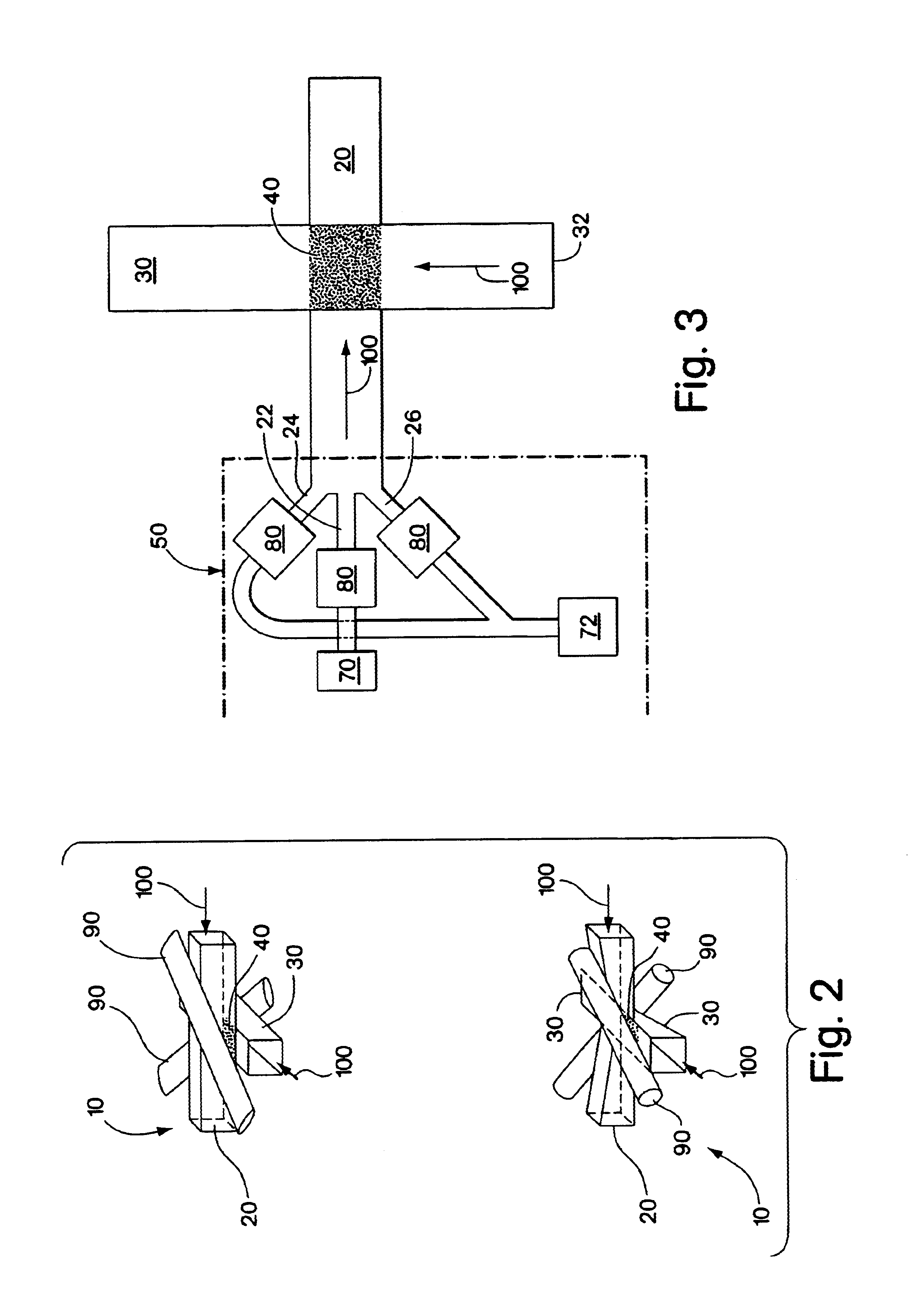Fluidic switches and methods for controlling flow in fluidic systems
a fluidic system and switch technology, applied in the field of fluidic systems, can solve problems such as system design and manufacture challenges
- Summary
- Abstract
- Description
- Claims
- Application Information
AI Technical Summary
Benefits of technology
Problems solved by technology
Method used
Image
Examples
example 1
[0058]Experiments were performed to determine the effects of aspect ratio and Reynolds number on the exchange of fluid between tangential fluid paths. The flow patterns were quantified by labeling the fluid entering one of the two fluid paths with a red absorption dye ferroin (1,10-phenanthroline iron(II) sulfate complex). After the system had reached a steady state (1-5 minutes), samples (200-300 μL) of the solutions exiting from the fluid paths were collected and their optical densities were measured with a diode array UV-VIS spectrometer (Hewlett Packard) at the absorption maximum of ferroin (510 nm).
[0059]To quantify the flow through the fluid paths 20, 30 normalized quantities QS (volumetric flow rate of the fluid continuing straight through the crossing) and QT (volumetric flow rate of the fluid turning at the crossing) were calculated, where the total flow rate through both fluid paths 20, 30 was normalized to the value of 1, so that QS+QT=1. To quantify the fluid exchange be...
example 2
[0062]Experiments were performed to determine whether the position of a fluid within a fluid path could be successfully manipulated to create a switch. Each of the flow paths used for this experiment had three inlets, two of which were used at any one time. The flow paths measured 100 μm×40 μm. Process fluids (aqueous solutions dyed red or green) were injected through the middle inlets of each fluid path. Carrier fluid (water) was injected through either the outer or the inner inlets of the fluid paths in order to focus the width of the process fluid streams to approximately ⅙th of the width of the channel, and to position these streams within the fluid path. The Re of the fluid in the fluid paths was 10. When carrier fluid was injected through the outer inlets, the process fluid occupied the inner part of each fluid path and continued straight through the crossing region. When carrier fluid was injected through the inner inlets, the process fluid was forced to occupy the outer part...
example 3
[0063]To determine whether a working switch could be constructed using the reservoir system described previously and illustrated in FIG. 2, experiments on such a system were conducted. PDMS tubes (Silastic brand, inner diameter 0.38 mm, outer diameter 1.09 mm) were molded above and below the crossing of fluid paths having a first aspect ratio of 1.2 (w×h=200 μm×240 μm). Each fluid path had three inlets, with a colored fluid being introduced into the middle inlet and carrier fluid being introduced into the outer inlets to keep the colored fluid away from the edges of the fluid path. At the crossing, colored fluid continued straight through these high aspect ratio channels. The direction of flow of the colored fluid was reversibly switched by pressurizing the PDMS tubing with air (2 atm)—the expanded PDMS tubing squeezed the channels and decreased their aspect ratio to a second aspect ratio, forcing the flow to turn. This demonstrates that a reservoir system can be used to actuate a s...
PUM
 Login to View More
Login to View More Abstract
Description
Claims
Application Information
 Login to View More
Login to View More - R&D
- Intellectual Property
- Life Sciences
- Materials
- Tech Scout
- Unparalleled Data Quality
- Higher Quality Content
- 60% Fewer Hallucinations
Browse by: Latest US Patents, China's latest patents, Technical Efficacy Thesaurus, Application Domain, Technology Topic, Popular Technical Reports.
© 2025 PatSnap. All rights reserved.Legal|Privacy policy|Modern Slavery Act Transparency Statement|Sitemap|About US| Contact US: help@patsnap.com



